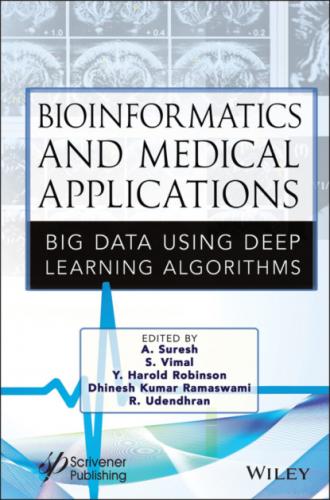The tools or common algorithms available for the leading NLP technologies in literature extraction are reviewed and compared to evidence-based clinical recommendations.
According to him, this paper deals with data needs and algorithm transparency, the importance of preparing patients and physicians for real-time reproduction and assessment, and modern digital healthcare. They believe that AI is the main factor in the evolution of healthcare into a precise drug but of the precedent that needs to be created to ensure safety and beneficial effects on healthcare [20].
2.3 Proposed Systems
Based on histo-pathological image input, there are two steps:
• Model building: The shape of this model is based on the extraction function.
• Model Evaluation: Form biological communication.
Modeling attempts to preserve the extracted shape by extracting shape-based features with full focus on the shape of the model. The fixed size is considered a constraint, and it focuses on all other faces found to achieve that form of the constraint, making it easy to extract the entire model.
2.3.1 Framework or Architecture of the Work
However, model evaluation includes some of the biological significance of the form, which requires the physician to have the precise and accurate information needed to evaluate the form.
2.3.2 Model Steps and Parameters
Here, we will focus more on size-based clinical models. There are several steps like segmentation, dimension reduction, sampling, enhancement, and active contour mapping and classification of the objects which are involved that help you to design your model in a very efficient way (as per Figure 2.1).
Figure 2.1 Framework of the experimental study of lung cancer stratification.
2.3.3 Discussions
Cancer has been the reason for death for a very long time. A little less than half of the cancer happens in individuals matured ≤70 to 85 years. The maximum death prone cancer is lung cancer where it threatens the all type of aged persons from adolescents to middle age to adults. Those who are addicted with drinking alcohol or smoking or females who were nonsmoking, all type of subjects were included in the list of casualties unfortunately from this illness.
Thus, it is needed to separate lung cancer based on risk included (highrisk, okay, and rising-risk). This investigation depends on building up an arrangement conspire for lung cancers through examining minuscule images and ordering them utilizing Deep Convolution Neural Network (DCNN), which is an AI (ML) structure.
Microscopic images of tissues will be characterized on the basis of risk involved using DCNN. Convolution neural networks are deep artificial neural networks that are utilized fundamentally for ordering images, group them by likenesses (photograph search), and perform object recognition inside the scenes. They are the calculations that can recognize faces, tumors, people, road signs, and numerous different parts of the graphic information.
The effectiveness of convolution networks in image recognition is one of the main reasons why the world has woken up for the productivity of deep learning. They are fueling significant progress in computer vision (CV), which has clear applications for self-driving vehicles, mechanical technology, security, clinical judgments, and medicines for the outwardly impaired.
2.4 Experimental Results and Analysis
The term “tissue characteristics” covers a wide range of meanings, from qualitative assessment to various scientific measurements. In the extensive literature available, we expand the definition of terms, show the relationship between tissue features and images, identify some relevant physical parameters, and briefly describe the subject’s medical history. Excerpts are provided to explain how.
2.4.1 Tissue Characterization and Risk Stratification
According to an article titled “Automatic classification of lung cancer from cellular images using deep symmetric neural networks”, we evaluated three types of cancer and trained for classification. However, pictures from the same sample belonged to the same group.
While executing cross-validation algorithm in different sets of images, we found that, in Set 1, there are 28 items and respective cross-validation score is 5,280 for adenocarcinoma. There are 42 items and cross-validation score is 5478 for squamous cell carcinoma. For small cell carcinoma, there are 26 images and cross-validation score is 5,070.
In Set 2, there are 28 items and respective cross-validation score is 5,184 for adenocarcinoma. There are 37 items and cross-validation score is 5,220 for squamous cell carcinoma. For small cell carcinoma, there are 33 images and cross-validation score is 5,280.
In Set 2, there are 26 items and respective cross-validation score is 5,040 for adenocarcinoma. There are 46 items and cross-validation score is 5,310 for squamous cell carcinoma. For small cell carcinoma, there are 32 images and cross-validation score is 5,214.
2.4.2 Samples of Cancer Data and Analysis
Figures 2.2 and 2.3 show a sample of cancer types correctly classified and classified using the data amplification method. The classification confusion matrix. Squamous cell carcinoma is often mistaken for adenocarcinoma.
After successfully applying classification model in this dataset, we have to test the accuracy, precision, and recall of the model. So, we observed the confusion matrix whose results are as follows: actual and predicted value of adenocarcinoma is 89% matched and only 11% items are not predicted correctly. Squamous cell carcinoma is predicted correctly 60% which is less as compared to adenocarcinoma. Actual and predicted value of small cell carcinoma is 70% matched and only 30% items are not predicted correctly.
It shows the original image classification and the wide range of image accuracy, respectively. Results obtained using magnification images show that the classification accuracy for adenocarcinoma, squamous cell carcinoma, and small cell cancer is 89.0%, 60.0% and 70.3%, respectively, and the overall corrected rate is 71.1%. In addition, apply plug-in to improve the classification.
Finally, we improved our classification model and accuracy score of trained set and augmented sets are given below:
Adenocarcinoma predicted 73% original images of lung cancer, whereas 89% for augmented images. We found that 45% original images are correctly classified and 60% augmented images are classified for squamous cell carcinoma. Small cell carcinoma is classified correctly 75% for original images and 70% for augmented images.
